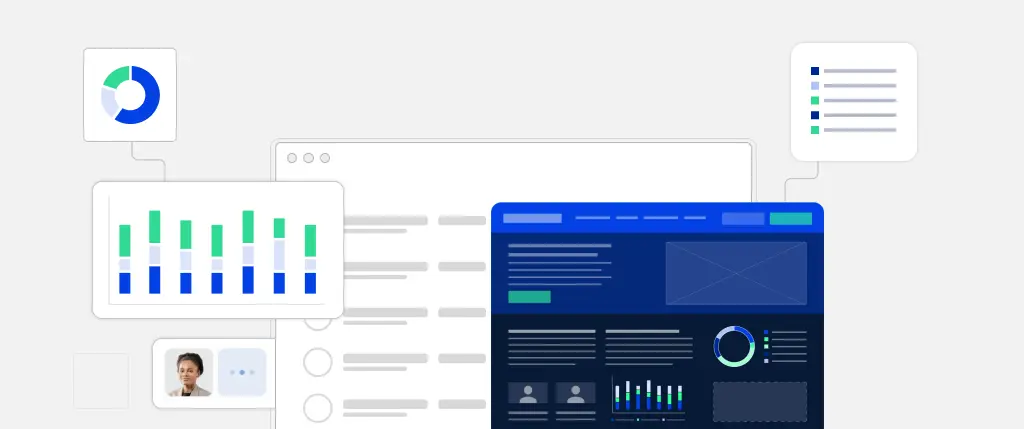AR integration in WordPress e-commerce is rapidly becoming a game-changer. No longer a futuristic concept, augmented reality (AR) now plays a central role in how customers interact with products online. From trying on clothing to placing furniture virtually in a living room, AR enhances product visualization and builds trust—leading to higher engagement and increased sales.
In this comprehensive guide, we’ll explore what AR is, why it matters, and how to implement AR integration in WordPress e-commerce using practical tools, plugins, and strategies. Whether you’re just getting started or looking to scale, this article covers everything you need to know.
What Is AR Integration in WordPress E-Commerce?
Augmented Reality (AR) overlays digital information or objects-like 3D models-onto the real world through a user’s smartphone, tablet, or AR glasses. Unlike virtual reality, which replaces your environment, AR enhances it.
In e-commerce, this allows users to:
- Preview furniture in their home
- Try on clothing or accessories virtually
- Rotate and inspect products from every angle
When you add AR integration in WordPress e-commerce, you allow customers to interact with your products in a more immersive and convincing way.
Why AR Integration in WordPress E-Commerce Matters
Let’s break down why this technology is essential for modern online stores:
✅ Increased Engagement
AR transforms passive browsing into an active experience. Customers spend more time interacting with your products, reducing bounce rates and improving product understanding.
✅ Lower Return Rates
Visualizing items in real-world contexts minimizes sizing confusion or unmet expectations – especially important in fashion and furniture industries.
✅ Boosted Conversion Rates
When shoppers can “see” a product in their environment, confidence rises. That trust translates directly into purchases.
✅ Competitive Advantage
Brands like IKEA, Sephora, and Warby Parker already use AR. Thanks to WordPress, you can compete at their level without a huge development budget.
Tools for AR Integration in WordPress E-Commerce
To integrate AR into your WordPress site, you’ll need a few tools:
WordPress-Compatible AR Plugins
Here are some recommended plugins that make AR integration in WordPress e-commerce simple:
🔹 Augmented Reality for WooCommerce
- Upload 3D files (GLB/USDZ)
- Display AR previews on product pages
- Works directly with WooCommerce
🔹 ModelViewer Block (by Google)
- Lightweight and Gutenberg-friendly
- Uses
<model-viewer>HTML tag - Supports interactive 3D and AR features
🔹 ZapWorks or 8thWall
- Ideal for advanced WebAR development
- Offers SDKs and drag-and-drop interfaces
- Works with WordPress through embeds
How to Prepare Your AR Files
Before adding 3D models to your product pages, make sure you use the right formats:
- .glb or .gltf (for Android)
- .usdz (for iOS devices)
For performance and scalability:
- Keep file sizes under 5MB when possible
- Host models on a CDN (e.g., Sketchfab, Amazon S3, or SiteBox)
Implementing AR on WordPress Product Pages
There are two primary ways to display AR:
✅ Using Plugins
Most AR plugins integrate with the WooCommerce product editor. Simply upload your 3D models and assign them to specific product pages.
✅ Using HTML: <model-viewer>
Here’s an example snippet:
<model-viewer
src="https://cdn.sitebox.io/models/sofa.glb"
ios-src="https://cdn.sitebox.io/models/sofa.usdz"
ar
auto-rotate
camera-controls
style="width: 100%; height: 400px;">
</model-viewer>And to include the required script in your theme:
function load_model_viewer() {
wp_enqueue_script('model-viewer', 'https://unpkg.com/@google/model-viewer/dist/model-viewer.min.js', [], null, true);
}
add_action('wp_enqueue_scripts', 'load_model_viewer');This allows users to view AR content directly in Safari (iOS) or Chrome (Android), providing a frictionless experience.
Best Practices for AR Integration in WordPress E-Commerce
🎯 1. Optimize Your 3D Files
Use simplified meshes and compressed textures to reduce load times. Prioritize responsiveness and performance.
🎯 2. Add Clear CTAs
Use buttons like “View in Your Space” or “Try in AR” with strong visual cues to increase user interaction.
🎯 3. Mobile-First Design
Most AR usage happens on smartphones. Ensure your website and product pages are fully responsive.
🎯 4. Cross-Platform Testing
Always test your AR features on both iOS and Android to catch device-specific issues.
🎯 5. Accessibility & Fallbacks
Provide alternative content for users who can’t access AR. For example, product videos or image carousels.
Example Use Cases for AR in E-Commerce
| Industry | AR Use Case |
|---|---|
| Furniture | Visualize a chair or sofa in a user’s living room |
| Fashion | Try on sunglasses or shoes virtually |
| Beauty | Apply makeup filters to preview shades |
| Home Decor | Preview wall art or lighting in a room |
| Electronics | View gadgets in 3D before purchase |
How SiteBox Simplifies AR Integration in WordPress
SiteBox offers a streamlined experience for AR integration in WordPress e-commerce:
🔧 Key Features:
- Pre-built ModelViewer Blocks for Gutenberg
- 3D CDN Hosting to serve models quickly and reliably
- Drag-and-Drop Uploads for .glb and .usdz files
- Automatic Format Conversion (GLB to USDZ)
- Mobile-Optimized Templates for AR product views
- Customizable CTAs and animations to boost interaction
With SiteBox, you don’t need a developer. The platform handles the heavy lifting so you can focus on your products and brand.
Step-by-Step: AR Integration Workflow
| Step | Action |
|---|---|
| ✅ 1 | Choose a plugin or use SiteBox |
| ✅ 2 | Create or source 3D models of your products |
| ✅ 3 | Upload models in .glb/.usdz format |
| ✅ 4 | Embed using a block or HTML snippet |
| ✅ 5 | Test across devices and browsers |
| ✅ 6 | Track performance and optimize UX |
Common Mistakes to Avoid
| Mistake | Solution |
|---|---|
| 🚫 Using heavy 3D models | Compress and simplify meshes |
| 🚫 Ignoring mobile experience | Test thoroughly on phones |
| 🚫 No fallback for non-AR users | Include product images or video |
| 🚫 Weak call-to-action | Use visual cues to drive engagement |
Conclusion: The Future Is AR
AR integration in WordPress e-commerce is more than a trend – it’s a transformative shift in how consumers shop online. Offering interactive previews and immersive product experiences can drastically improve user satisfaction, reduce returns, and increase conversions.
Thanks to plugins, lightweight tools like <model-viewer>, and robust platforms like SiteBox, you can start implementing AR today—without a steep learning curve.
✅ What to Do Next:
- Choose an AR plugin or use SiteBox for faster setup
- Prepare lightweight, mobile-optimized 3D models
- Embed AR features into key product pages
- Test across all platforms and refine user experience
🚀 Ready to bring your products to life? Explore SiteBox and transform your WordPress store with AR today.




